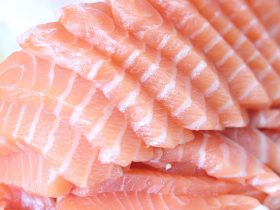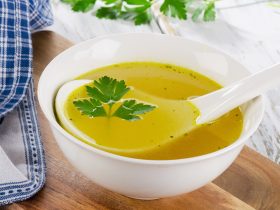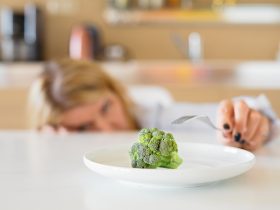This article delves into the relationship between diet and vestibular migraines, offering a comprehensive guide to dietary adjustments to alleviate symptoms. Vestibular migraines, characterized by vertigo as their primary symptom, pose a unique challenge.
Vertigo manifests as a sensation of movement when there is none or as a perception that one’s surroundings are in motion. This sensation can be likened to motion sickness. Episodes of vestibular migraines can vary, lasting from mere seconds to several hours. Symptoms encompass an array of discomforts, including loss of balance, motion sickness, dizziness, lightheadedness, disorientation or confusion, nausea and vomiting, and often a severe headache.
While pulsating headaches frequently accompany traditional migraine attacks, vestibular migraines do not consistently present this symptom, making diagnosis complex.
Significantly, research has suggested that lifestyle and dietary modifications may hold the key to diminishing the frequency and intensity of vestibular migraine episodes. Individuals prone to migraines may grapple with episodes triggered by various factors, such as specific foods, scents, or stress.
These triggers will incite the usual migraine symptoms rather than a different type. Consequently, if you are susceptible to vestibular migraines, your triggers will precipitate an episode of this kind.
The Link Between Your Diet and Vestibular Migraine Episodes
The precise cause of vestibular migraines remains an enigma. Nonetheless, this condition appears to affect women more frequently and might be influenced by genetic, dietary, lifestyle, and environmental factors.
Studies propose that removing dietary triggers might curtail the frequency and severity of migraine attacks, including vestibular migraines.
Notably, certain common dietary culprits often exacerbate migraine attacks. These culprits encompass chocolate, alcohol, coffee, aged cheeses, and processed meats. These foods contain chemicals such as tyramine, nitrates, histamine, and phenylethylamine, all associated with migraine symptoms.
Some individuals have reported heightened migraine symptoms when they skip meals or fast, indicating that irregular eating habits may spark an attack. Even mild dehydration, which can result from inadequate water intake, has the potential to trigger a migraine episode.
It’s imperative to acknowledge that trigger foods can differ from one individual to another. Some people might discover that their diet exerts no influence on their migraine episodes.
Components of a Vestibular Migraine Diet
Presently, there are no established dietary directives for managing vestibular migraines.
Consider examining if certain foods, particularly those recognized as migraine triggers, have any association with your migraine episodes.
You can commence by excluding the specific suspect food item to gauge its impact on the frequency of your migraines. If pinpointing a dietary trigger proves challenging, consider an elimination diet strategy. This method involves the removal of foods suspected to exacerbate your symptoms. Because individuals react uniquely to various foods, elimination diets are customized to each person’s needs.
Subsequently, you gradually reintroduce these foods, categorized by groups, in order to identify any specific food or food group that might be triggering your symptoms.
An elimination diet typically spans 5–6 weeks. It is imperative to undertake this process under the guidance of a healthcare professional, such as a dietitian or physician, as incorrect or prolonged adherence may elevate the risk of nutritional deficiencies.
It’s important to recognize that vestibular migraines are multifaceted, and you may discover that dietary adjustments have no discernible impact on your symptoms.
The Phases of an Elimination Diet
The Elimination Phase
In this initial stage, you abstain from consuming foods that could potentially provoke vestibular migraine symptoms.
This period allows you to assess whether your diet is a contributing factor to your symptoms, as you have eliminated nearly all potential trigger foods.
Typically, the elimination phase spans a duration of 2–3 weeks
The Reintroduction Phase
In this stage, you gradually reintroduce the foods or food groups that were initially excluded.
Each food group should be reintroduced individually over a period of 2–3 days, during which you meticulously document its impact on your vestibular migraine symptoms.
If you observe that reintroducing a specific food or food group does not exacerbate your attacks, it is likely safe to include in your diet. Conversely, any food that triggers symptoms may necessitate its permanent removal from your dietary choices.
The duration of the reintroduction phase extends for an additional 2–3 weeks, depending on the number of food groups initially eliminated. However, its duration may be extended if advised by your healthcare professional.
Avoid These Foods
A vestibular migraine elimination diet is designed to exclude foods that are commonly associated with migraine symptoms:
- Aged cheeses
- Alcohol, particularly red wine and beer
- Aspartame, an artificial sweetener
- Chocolate
- Processed meats like bacon, sausages, salami, and cured meats
- Monosodium glutamate (MSG)
Caffeine consumption significantly impacts migraines. Changing your caffeine intake during an elimination diet can trigger migraines if you regularly consume caffeinated beverages. Therefore, it’s advisable to maintain your usual caffeine intake while attempting this diet.
Other foods may exacerbate symptoms, although the supporting evidence is less substantial:
- Citrus fruits
- Tomatoes
- Onions
- Beans and lentils
- Nuts and seeds
- Pickled and fermented foods
- Organ meats, such as beef and chicken livers
- Salted, smoked, and dried fish
- Dairy products like milk, cheese, cream, ice cream, and yogurt
- Canned soups, soup cubes, and bouillon cubes containing MSG
- Fruit juices and carbonated sodas
- Bottled salad dressings and packaged dips
- Vitamins and herbal supplements, especially those containing caffeine
If you suspect that foods not mentioned here may trigger your vestibular migraine symptoms, it’s advisable to seek guidance from a healthcare professional and consider eliminating them as well.
Before embarking on any elimination diet, consult with your doctor to discuss which foods to exclude and the duration of each phase. It’s important to note that these food groups should only be avoided during the elimination phase; they will be gradually reintroduced later in the process.
Foods To Eat
Throughout the elimination phase, you can savor a diverse range of nourishing and delectable foods:
- Fruits: Most fruits are permissible, excluding citrus and tomatoes.
- Vegetables: You can enjoy the majority of vegetables, with the exception of onions, beans, and lentils.
- Grains: All grains, including rice, quinoa, couscous, and oats, are allowed.
- Meat, eggs, and fish: Fresh meats like chicken, beef, turkey, lamb, eggs, and fish are suitable choices. However, avoid processed or boxed meats and fish.
- Dairy substitutes: Embrace nondairy milk options such as coconut and oat milk.
- Fats: Incorporate healthy fats like olive, flaxseed, and coconut oils into your meals.
- Beverages: Stay hydrated with water and savor decaffeinated herbal teas.
- Spices and condiments: Utilize fresh herbs and spices liberally, and feel free to prepare most homemade condiments (store-bought dressings or dips are an exception).
If you encounter difficulties in maintaining motivation during this phase, consider experimenting with a variety of herbs and spices to enhance the flavor of your dishes.
Possible Drawbacks
Despite its potential benefits in mitigating vestibular migraine symptoms, an elimination diet does come with certain potential drawbacks.
Adapting to an elimination diet can be challenging. It’s crucial not to embark on an extended period of this diet without the guidance and supervision of a healthcare professional, such as a doctor or dietitian.
Prolonged restriction of multiple food groups raises the risk of nutrient deficiencies.
Additionally, it’s essential to recognize that eliminating trigger foods may not yield positive results for everyone, as diet may not contribute to all cases of vestibular migraine attacks. What triggers symptoms in one individual may not necessarily trigger them in another.
In Conclusion
Vestibular migraines, marked by distressing vertigo episodes, can become more manageable by eliminating trigger foods.
Common dietary culprits encompass aged cheeses, processed meats, chocolate, coffee, MSG, and alcoholic beverages like red wine and beer. Skipping meals or fasting might also contribute.
Certain studies propose that an elimination diet can aid in pinpointing specific triggers.
It’s crucial to undertake an elimination diet only under the guidance of a healthcare expert. Keep in mind that dietary factors may not be a factor in every individual’s migraine symptoms.















Find Us on Socials